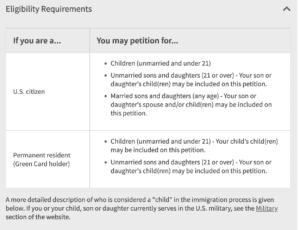Immigration Tied with Abortion Near the Top of Midterm Issues
On October 17, the New York Times published its latest poll, showing that immigration is now tied with abortion as the fourth leading issue on voters’ minds with midterm elections that will determine which party controls Congress just three weeks away. Concerns about immigration and the border are surging at the worst time for President Biden and his fellow partisans, and they likely have three Republican governors and three Democratic mayors to blame.
The Poll. The poll was conducted for the Times by Sienna College and included 792 likely voters in the upcoming midterms, adjusted by age, region, and voting patterns. The margin of error is +/- 4.0 percent for registered voters, and +/- 4.1 percent for likely voters.
Direction of the Country and Biden Approval. Poll respondents had a dour take on the direction the United States is headed. Nearly two-thirds — 64 percent — of respondents believe that the country is on the “wrong track”, compared to fewer than a quarter — 24 percent — who opine that the republic is on the “right track”.
That represents an increase in wrong track sentiment from polling conducted month before, when New York Times/Sienna polling showed that 60 percent of respondents believed that the country was headed in the wrong direction, compared to 27 percent who thought it was going the right way. That’s bad news in and of itself for Democrats, who must defend their policies in the upcoming election.
In the most recent poll, just 39 percent of respondents approved of Biden’s handling of his job as president (18 percent of whom “strongly approve”), compared to 58 percent who disapprove of Biden’s performance (45 percent “strongly”).
That means that not just Republicans are unhappy with Biden’s handling of the presidency, and if the election is a referendum on him, it will be a long election night for his fellow Democrats.
It also represents a decline in Biden’s support from that September New York Times/Sienna poll, when Biden enjoyed 41 percent support for his handling of the presidency (again, with 18 percent strong approval) compared to 53 percent disapproval (44 percent of total respondents strongly disapproving).
Most Important Problem Facing the Country. The New York Times/Siena poll also asked respondents what the most important problem facing the country was.
Two financial issues topped the list: “The economy (including jobs, stock market)” was the leading issue for 26 percent of the likely voters polled, followed by “inflation of the cost of living”, with 18 percent. “The state of democracy” — a rather vague concern — was the most important issue for an additional 8 percent of respondents, putting it in third place.
Which brings me to immigration and abortion, tied for fourth place (out of 20 possible issues) with 5 percent of respondents asserting that each was their leading issue.
There were a lot of similarities with respect to respondents’ takes on these issues.
Each is of particular importance among female voters: Nine percent of that cohort stated that abortion was their most important issue, the third leading one after the economy and inflation; while 7 percent of female respondents asserted that immigration was their top issue, making it the fourth greatest concern for women.
Conversely, both issues were of lesser concern among male voters, half of whom stated that the economy (31 percent) or inflation (19 percent) were their leading concerns.
Three percent of men asserted that immigration was their top concern, tying it with (among other things) “Russia/war in Ukraine”, “Trump/Republicans”, and “Biden/Biden administration/Democrats”. Abortion, however, was an even lesser concern among men, with just 1 percent identifying it as the most pressing issue — tied with education and health care.
One big difference between responses about immigration and abortion, however, was the age of the respondent. Ten percent of those aged 18 to 29 identified abortion as their top concern, while just 2 percent of this cohort said it was immigration. Conversely, 11 percent of voters aged 65 and above identified immigration as their most pressing issue, while just 5 percent said it was abortion.
Another difference has to do with race. Seven percent of whites but just 3 percent of Hispanics said that immigration was their most important issue, a response that was perfectly mirrored by their concerns about abortion: That issue was tops for 7 percent of Hispanics but just 3 percent of whites.
Why Voters Are Concerned About Immigration Now. In a New York Times/Siena poll conducted in early July, the same 5 percent of respondents identified abortion as their most important issue, but just 2 percent said that it was immigration. Why have concerns about immigration grown so substantially in such a short period of time?
The most obvious response is the attention that has been focused on the issue thanks to the efforts of three GOP governors — Greg Abbott (Texas), Doug Ducey (Ariz.), and Ron DeSantis (Fla.) — to transport illegal entrants released by DHS at the border to northern Democratic strongholds in Washington, D.C., New York City, Chicago, and (in the case of DeSantis), Martha’s Vineyard, Mass.
Before those governors undertook this transportation scheme, most major media outlets (except for Fox News) largely overlooked the humanitarian crisis at the Southwest border. Once migrant buses started rolling into D.C.’s Union Station (across from the Hall of the States, Washington headquarters for several networks) and Manhattan’s Port Authority bus depot, they had no choice but to cover it.
The urgency of the story was only heightened when NYC Mayor Eric Adams (D) and D.C. Mayor Muriel Bowser (D) declared states of emergency to deal with their migrant issues, and Chicago Mayor Lori Lightfoot (D) demanded federal assistance to deal with hers. If Abbott, Ducey, and DeSantis put the border on the front page, Adams, Bowser, and Lightfoot kept it there, underscoring the urgent need for a federal response.
With the midterms right around the corner, Biden and congressional Democrats likely hope that the administration’s border failures could just stay hidden. Thanks to three GOP governors and three Democratic mayors, however, that’s the opposite of what’s happening, as concerns over immigration begin to motivate an already energized electorate.





